- Umang Sagar
- Recent article, World Issue
Afghanistan Crisis
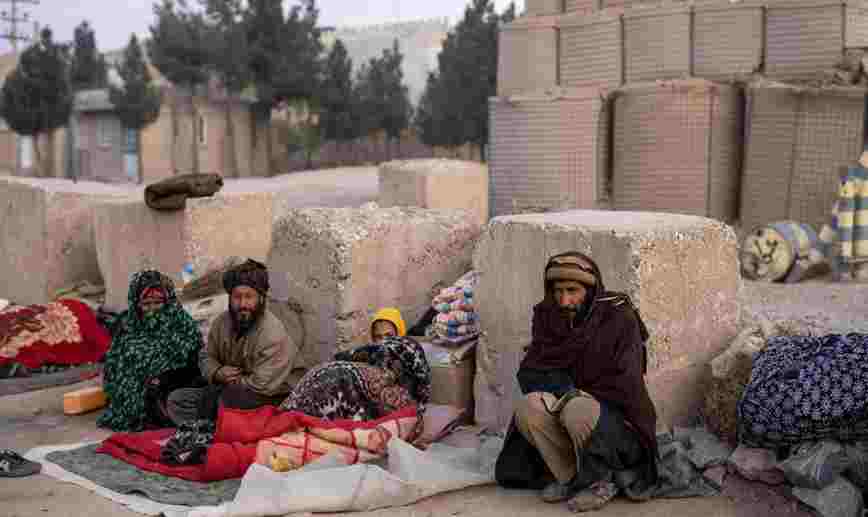
Introduction
The Afghanistan War, an international conflict in Afghanistan beginning in 2001 that was triggered by the September 11 attacks, consisted of three phases. The first phase—toppling the Taliban (the ultraconservative political and religious faction that ruled Afghanistan and provided sanctuary for al-Qaeda, perpetrators of the September 11 attacks)—was brief, lasting just two months. The second phase, from 2002 until 2008, was marked by a U.S. strategy of defeating the Taliban militarily and rebuilding the core institutions of the Afghan state. The third phase, a turn to classic counterinsurgency doctrine, began in 2008 and accelerated with U.S. Pres. Barack Obama’s 2009 decision to temporarily increase the U.S. troop presence in Afghanistan.
The larger force was used to implement a strategy of protecting the population from Taliban attacks and supporting efforts to reintegrate insurgents into Afghan society. The strategy came coupled with a timetable for the withdrawal of the foreign forces from Afghanistan; beginning in 2011, security responsibilities would be gradually handed over to the Afghan military and police. The new approach largely failed to achieve its aims. Insurgent attacks and civilian casualties remained stubbornly high, while many of the Afghan military and police units taking over security duties appeared to be ill-prepared to hold off the Taliban. By the time the U.S. and NATO combat mission formally ended in December 2014, the 13-year Afghanistan War had become the longest war ever fought by the United States.
History Of Taliban

The Taliban have often been labeled as the Afghan Government and America’s greatest enemy in Afghanistan. This is only partially true; the Taliban are not as united as some might think, and in the end, their divisions may prove their downfall more than any kinetic operation or government negotiations. Either way, after six years, it is clear that kinetic operations alone will not defeat them. As opposed to their rapid ascension to power in the mid-1990s, the Taliban at this point is committed to a “protracted war.” The Taliban ideology is a schizophrenic distortion of Pashtunwali (“the Way of the Pashtun,” the Pashtun moral code) and fundamentalist Islam. Oftentimes, the Taliban itself confuses the two, and this confusion is part of the larger divide in the Taliban: is it a jihadist organization, or a Pashtun one? Born supposedly in 1994, during a particularly tumultuous time in Afghan history, the Taliban went on to control Kabul in 1996 and had five years in which they ruled Afghanistan tyrannically with a crude mixture of theocratic intolerance, ethnocentrism, and anarchic brutality. Women were cruelly treated in a legal system that disqualified their testimony and made rape unless witnessed by four corroborating males, the same as adultery and therefore punishable by death. Ethnic and Islamic minorities were cleansed, and development was all but ceased as the youth were turned out of secular education to memorize the Quran, and females were forced out of public life altogether.

The Taliban mythology cites their creation as a reaction to the injustices that were perpetrated during the mujahedin era of Afghan politics. In 1992 the Najibullah socialist regime was finished, and Afghanistan was divided between rival warring factions. In the Southern Pashtun homelands these divisions were most critical, with a plethora of armed bands competing for territory. At some point, it is assumed Pakistani Inter-Service Intelligence (ISI) came to notice the village mullah and his rag-tag bunch of Islamic student/fighters (Taliban) and began to lend support. The Taliban rose to power as a popular movement, at least in the Pashtun homelands. They brought stability, law, and order, albeit at a cost. Still, crime by individuals plummeted and male civilians could venture out of their homes in relative freedom, provided they were bearded and attended regular prayers. Little is known about Mullah Omar. He is one-eyed, as a result of fighting during the anti-Soviet campaign. Only one photo of him is known to exist, and even during the five years he ruled the nation as amir, he is known to have only made two trips to Kabul, preferring instead to rule from Kandahar. He is from the Hotaki clan of the Ghilzai supertribe, the largest Pashtun confederation.
Traditionally, the Ghilzai have been denied leadership positions in Afghanistan by the less-numerous Duranni Pashtuns (all the kings of Afghanistan since 1747 and President Hamid Karzai are Durrani Pashtun). After fighting the Soviets he returned to his native district near Kandahar and ran a madrassah (religious school). In 1996, five months before capturing Kabul, he not only touched but wore the supposed cloak of Mohammad (PBUH) in Kandahar. This invested him with a divine legitimacy in the eyes of many rural, uneducated Pashtuns. The Taliban are driven by two competing interests: the desire to re-conquer Afghanistan and the desire to re-establish a caliphate. The first is Pashtun-centric, the second more al Qaeda inspired. The danger of each wing to the Taliban is that the Pashtun-centrists may be amenable to cooption in a new Afghanistan and that the jihadists with a more global view may be marginalized into criminals and simple terrorists. Because of these two divergent goals, the means are often similarly disparate. This is precisely what causes the friction in Taliban tactics: is it a terrorist organization, or an insurgent force. Ideally, it is thought, the Taliban would like to perform as an insurgent force, but it lacks the popular support and resources to make that possible. After 2001, a massive reorganization was called for within the Taliban leadership; it had been knocked out of government, was on the run, and not even the local population in the southeast, from whence the Taliban sprung, would support them.
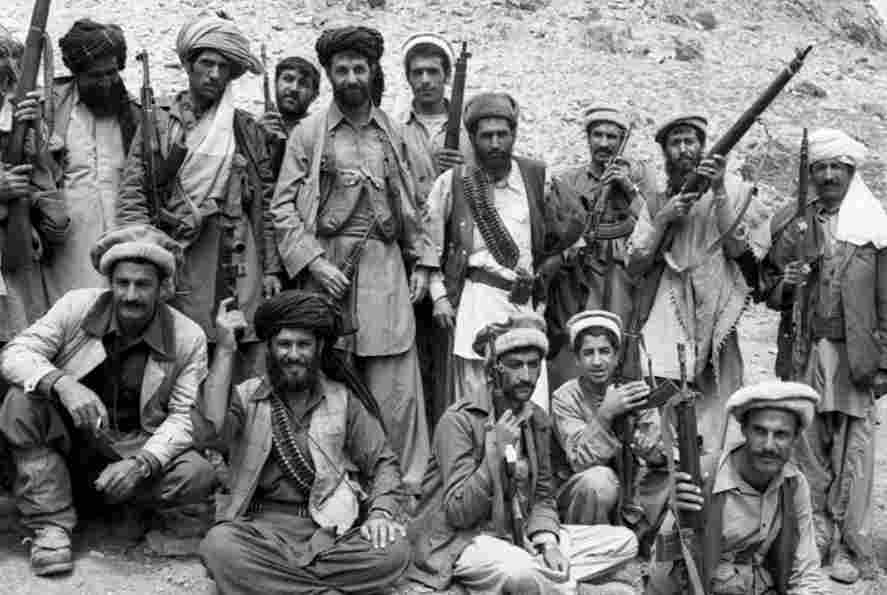
- The Taliban, because it actually has been in power, does not enjoy this advantage as much as other insurgent groups might. Since 2001, the Taliban has relied a great deal on terrorist tactics. This is ironic, as it was precise as a result of such tactics used by the Taliban’s guest, al Qaeda, that their time in power was ended. Unfortunately, this has encouraged greater cooperation between the Taliban and al Qaeda, and a sharing of tactics. The first recognized suicide bombing in Afghanistan took place on September 9, 2001, wherein disguised al Qaeda operatives killed Ahmad Shah Masood, the “Lion of Panjshir” and leader of the Northern Alliance. This can be viewed as an ipso facto gift from al Qaeda to the Taliban. From then until the Taliban rebound in 2004-2005, suicide attacks remained few in number and primarily perpetrated by foreign elements (i.e. Pakistani Punjabis). In recent times, however, the number of suicide attacks has increased exponentially, and their lethality has as well. The Taliban was forced into a corner after 2001, and could only exist as a terrorist organization. Hence the large army groups they had previously besieged the Northern Alliance with rapidly deteriorated to squad sized units. By 2005, however, they were again fielding company-sized units, and by 2006 battalions. After 2004 they also began to overrun districts regularly. The districts were never held for very long, but long enough to kill suspected coalition sympathizers and impress a soon-wavering local population. From a terrorist force on the run to destabilizing presence to a rebel army seems to be their strategic vision. This follows Che Guevera’s observation that ‘insurgents themselves can create the conditions necessary for government overthrow.
Freedom Of Media
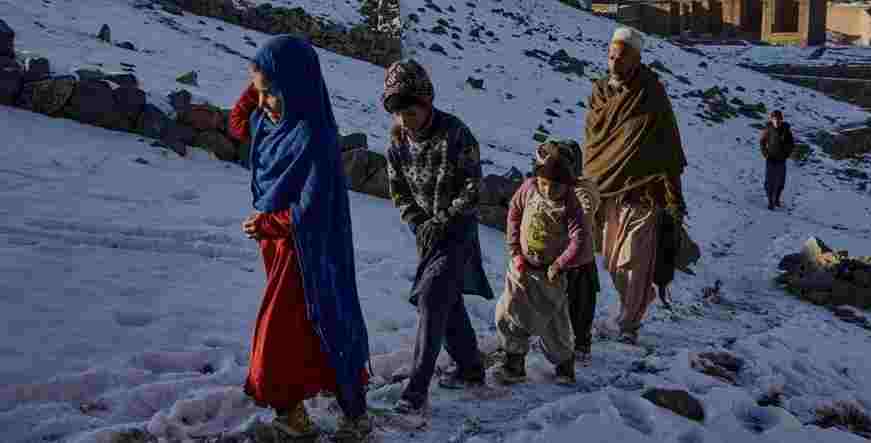
The Afghan media came under growing threat since the beginning of the year, principally from the Taliban. The ISKP also carried out a number of deadly attacks on journalists. On December 21, 2020, Rahmatullah Nekzad, head of the Ghazni journalists’ union, was fatally shot as he walked from his home to a local mosque. Although the Taliban denied responsibility, Nekzad had previously received threats from local Taliban commanders.
The ISKP took responsibility for killing Malala Maiwand, a TV presenter for Enikass News in Jalalabad, along with her driver, Tahar Khan, on December 10, 2020. In two separate attacks in Jalalabad on March 2, 2021, gunmen fatally shot three women who worked at Enikass News dubbing foreign language news reports.
After the Taliban takeover, nearly 70 percent of all Afghan media outlets closed, and others were operating under threat and self-censoring. In September, the Taliban authorities imposed wide-ranging restrictions on media and free speech that included prohibitions on “insulting national figures” and reports that could have a “negative impact on the public’s attitude.” On September 7, Taliban security forces detained two journalists from the Etilaat-e Roz media outlet and severely beat them in custody before releasing them. The reporters had been covering protests by women in Kabul. The Taliban detained at least 32 journalists after taking power in Kabul.
Beginning on September 2, Afghan women carried out demonstrations in several cities to protest against Taliban policies violating women’s rights. In Herat, Taliban fighters lashed protesters and fired weapons indiscriminately to disperse the crowd, killing two men and wounding at least eight more. The Taliban subsequently banned protests that did not have prior approval from the Justice Ministry in Kabul. Some protests nevertheless continued.
On July 6, the former Afghan government announced it was unlawful to broadcast news “against the national interest.” On July 26, four journalists were arrested by the former government’s intelligence agency after they returned from Spin Boldak, Kandahar, where they had been investigating the Taliban’s takeover of the district. They were not released until after Kandahar fell to the Taliban on August 13.
Violation Of Laws

The United Nations reported that Taliban forces were responsible for nearly 40 percent of civilian deaths and injuries in the first six months of 2021, although many incidents were unclaimed. Women and children comprised nearly half of all civilian casualties. Attacks by the ISKP included assassinations and a number of deadly bombings.
Many attacks targeted Afghanistan’s Hazara Shia community. On May 8, three explosions at the Sayed al-Shuhada school in Kabul killed at least 85 civilians, including 42 girls and 28 women, and injured over 200—the vast majority from the Hazara community. The attack was unclaimed but occurred in a predominantly Hazara neighborhood that ISKP had repeatedly targeted. On October 8, a suicide bombing during Friday prayer at a Shia mosque in Kunduz killed at least 72 people and injured over 140; the ISKP claimed responsibility. On March 4, gunmen fatally shot seven Hazara laborers at a plastics factory in Jalalabad.
Taliban forces in several provinces carried out retaliatory killings of at least dozens of former officials and security force personnel. After the Taliban took control of Malistan, Ghazni, in mid-July, they killed at least 19 security force personnel in their custody, along with a number of civilians. Advancing Taliban forces killed at least 44 former security force members in Kandahar after the Taliban captured Spin Boldak in July. All had surrendered to the Taliban. There were credible reports of detentions and killings in other provinces as well as Kabul.
Both the Taliban and ISKP carried out targeted killings of civilians, including government employees, journalists, and religious leaders. On January 17, 2021, unidentified gunmen fatally shot two women judges who worked for Afghanistan’s high court and wounded their driver. ISKP claimed responsibility for killing nine polio vaccinators in Nangarhar between March and June. On June 9, gunmen killed 10 humanitarian deminers in Baghlan; ISKP claimed responsibility. In August, an ISKP suicide bombing at Kabul’s airport killed 170 civilians, including many Afghans trying to flee the country.
Taliban forces also forcibly evicted people from their homes in a number of provinces including Daykundi, Uruzgan, Kunduz, and Kandahar, in apparent retaliation for the residents’ perceived support for the former government. In the largest of these expulsions, in September, hundreds of Hazara families from the Gizab district of Uruzgan province and neighboring districts of Daykundi province were forced to abandon their homes and flee.

Both the Taliban and Afghan government security forces were responsible for killing and injuring civilians in indiscriminate mortar and rocket attacks, and civilian casualties from the former government forces’ airstrikes more than doubled in the first half of 2021 compared with the same period in 2020. In one incident, on January 10, an airstrike in Nimroz killed 18 civilians, including seven girls, six women, and four boys; two civilian men were injured.
On August 15, as the Taliban entered Kabul, a strike force unit from the former government’s National Directorate of Security captured and executed 12 former prisoners who had just been released, according to witnesses.
On August 29, the US launched a drone strike on a car it claimed was filled with explosives headed for Kabul’s airport. The car was actually driven by an NGO employee scheduled for evacuation to the US. Two weeks later the US Defense Department admitted the strike had been a “tragic mistake,” killing 10 civilians, including seven children.
Women Rights
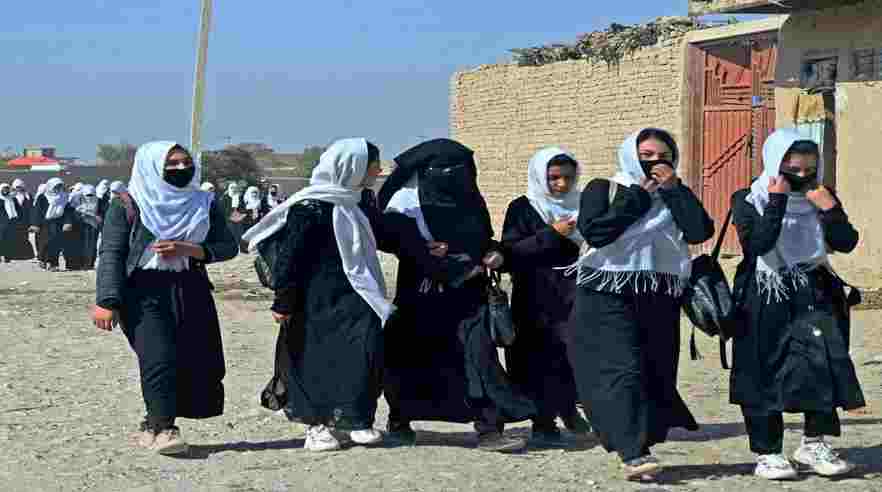
In the weeks after the Taliban takeover, Taliban authorities announced a steady stream of policies and regulations rolling back women’s and girls’ rights. These included measures severely curtailing access to employment and education and restricting the right to peaceful assembly. The Taliban also searched out high-profile women and denied them freedom of movement outside their homes.
The Taliban have said they support education for girls and women, but on September 18 they ordered secondary schools to reopen only for boys. Some secondary schools for girls subsequently reopened in a few provinces, but as of October, the vast majority remained shut. On August 29, the acting minister of higher education announced that girls and women could participate in higher education but could not study with boys and men. A lack of female teachers, especially in higher education, likely means this policy will lead to de facto denial of access to education for many girls and women.
Women who had taught boys in classes above sixth grade or men in mixed classes at university have been dismissed in some areas because teaching males is no longer allowed. In many parts of Afghanistan, Taliban officials have banned or restricted female humanitarian workers—a move that could likely worsen access to health care and humanitarian aid. The Taliban have also dismissed almost all female government employees. In September, the Taliban’s Ministry of Rural Development ordered only men to return to their jobs, saying women’s return to work was “postponed” until it prepared a “mechanism for how they will work.” When women have been allowed to return to work, they have faced requirements for gender segregation in their workplaces.
In September, the Taliban eliminated the Ministry for Women’s Affairs and repurposed its building as the Ministry for the Propagation of Virtue and Prevention of Vice, an institution mandated to enforce rules on citizens’ behavior, including how women dress, and when or whether women can move outside the home unaccompanied by a male relative. The shelters that had been established for women fleeing violence have been closed, and some of the women who lived in them have been transferred to women’s prisons.
Humanitarian Situation
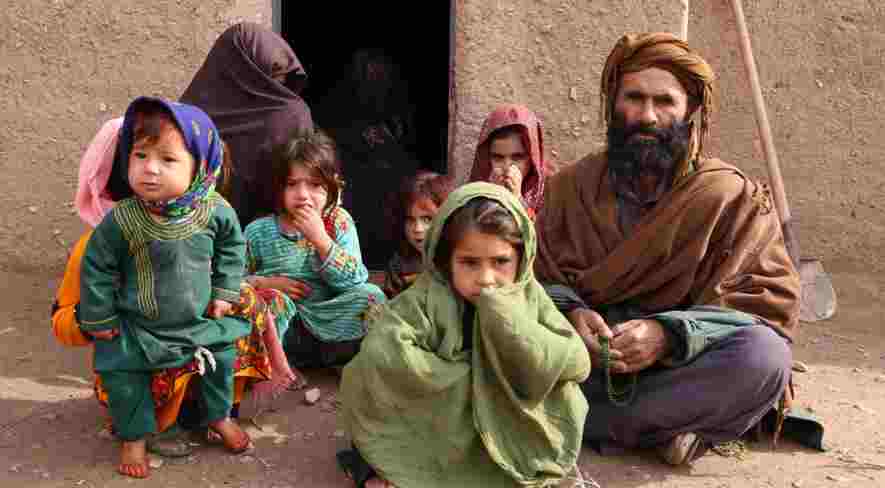
- The UNICEF Afghanistan Humanitarian Action for Children (HAC) appeal is the largest in the history of the organization, valued at US$ 2 billion for 2022. Thanks to partners’ generous contributions, the appeal is currently 15 percent funded. This includes flexible emergency funding from both public and private partners, which will continuously enable UNICEF to utilize resources to respond to rising and sudden needs. Some contributions received in 2021 will continue to support implementation in 2022, including funds from the Afghanistan Reconstruction Trust Fund (ARTF), the European Union (International Partnerships and Humanitarian Aid), and the governments of the USA, United Kingdom, and France. UNICEF is grateful to the Afghanistan Humanitarian Fund (AHF) and the Government of Lithuania for contributions received at the start of 2022.
UNICEF will continue to partner with donors to ensure sufficient resources are mobilized to address the needs of children and communities in Afghanistan. In January 2022, a total of 63,200 people returned from Pakistan and Iran. High proportions of returnees are coming from Iran (57,400 or 91 percent), among which 43 percent are children under the age of 18 years.
On 17 January 2022, a 5.3-magnitude earthquake struck Badghis, Ghor, and Herat Provinces of western Afghanistan. Qadis District of Badghis Province was the most affected district with 27 people killed, four people injured, and hundreds of houses damaged or destroyed. Following the earthquake, UNICEF provided 1,156 families with winter clothing kits for children, baby blankets, tarpaulin, and hygiene kits.
In January 2022, the number of measles cases increased around the country, with around 5,348 cases this month. Helmand, Kandahar, Paktika, Ghor, and Ghazni Provinces were most affected. Additional infectious diseases cases were also reported, including 157 new cases of acute watery diarrhoea (AWD) and 14 new cases of dengue fever.
International Support
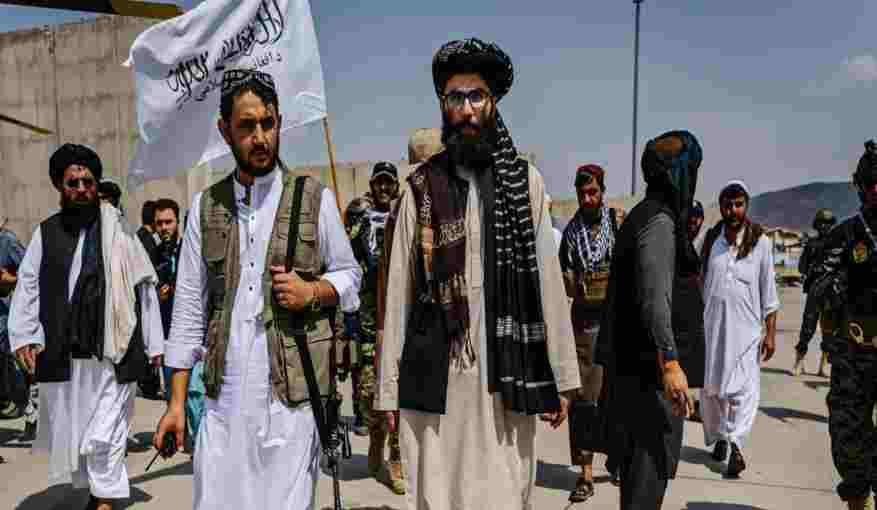
On April 14, US President Joe Biden announced a full US troop withdrawal from Afghanistan. The expedited withdrawal did not include plans for evacuating many Afghans who had worked for the US and NATO forces or for programs sponsored by donor countries.
Canada, the EU, the United Kingdom, the United States, and other countries evacuated several hundred thousand Afghans who had worked directly with those governments, their military forces, or organizations they supported. Thousands more Afghans remained at risk—including human rights defenders, women’s rights activists, journalists, and lesbian, gay, bisexual, and transgender people—with no way of exiting the country safely. Although EU members evacuated some Afghans, as of November, none had made commitments to take in more refugees. Member states pledged one billion euros in humanitarian aid.
After the Taliban takeover, the New York Federal Reserve cut off the Afghanistan Central Bank’s access to its US dollar assets. The International Monetary Fund prevented Afghanistan from accessing funding including Special Drawing Rights. In August, donors stopped payments from the World Bank-administered Afghanistan Reconstruction Trust Fund, previously used to pay civil servants’ salaries, accelerating Afghanistan’s economic collapse.
In September, the UN Security Council authorized a six-month renewal of the UN Assistance Mission in Afghanistan (UNAMA). The future of the mission, which among other things is mandated to promote the rights of Afghan women and girls and to monitor, investigate, and report on alleged human rights abuses, is uncertain. UN Secretary-General Antonio Guterres is expected to make recommendations to the council in early 2022 on UNAMA’s future.
As of November, the Taliban government had not been formally recognized by any other country. In September, the EU set five benchmarks for engagement with the Taliban government, among them, respect for human rights, in particular those of women and girls, and establishing an inclusive and representative government.
At the G20 meeting on September 23, China’s Foreign Minister Wang Yi called for an end to all economic sanctions on Afghanistan, said that China expected the Taliban government to eventually become more inclusive, and called on the Taliban to “resolutely” fight international terrorism. As of November 1, Russia, Turkey, and Iran stated they would not acknowledge a Taliban-led government until they formed an “inclusive” administration. Russia invited Taliban representatives to international talks on Afghanistan in Moscow on October 20.
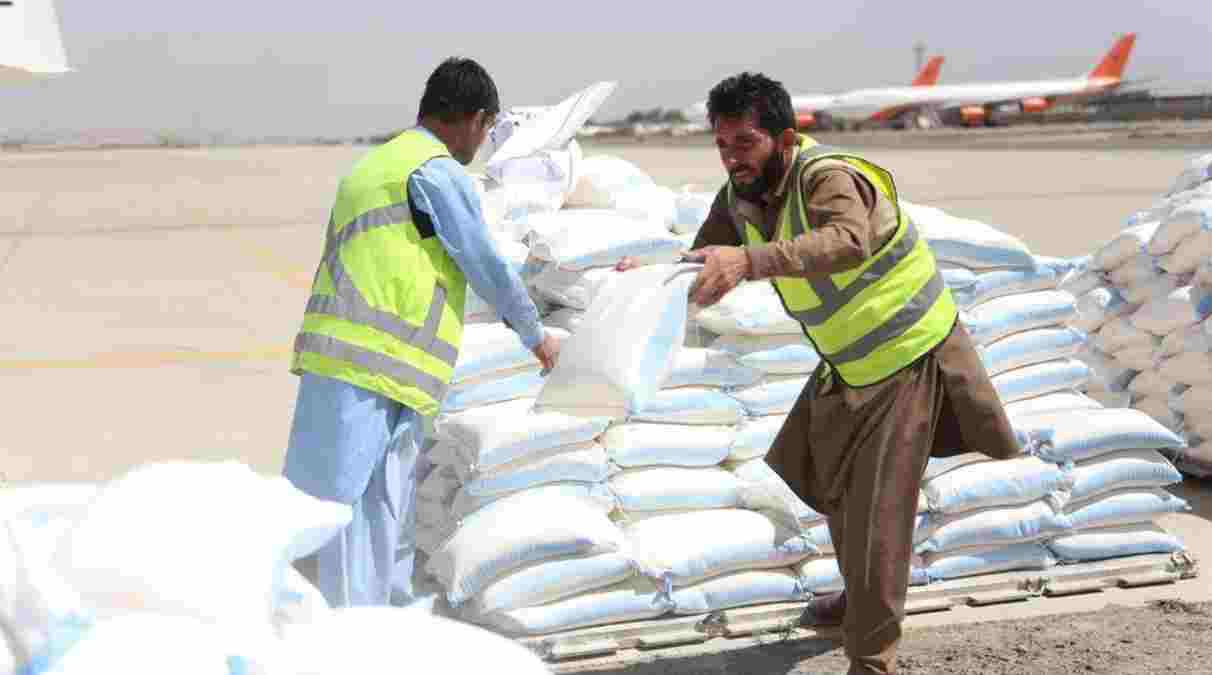
While Pakistan stopped short of recognizing the Taliban government, it called for greater international engagement with the Taliban, while also urging them to create a more “inclusive” government. Throughout the year, the deteriorating situation in Afghanistan was repeatedly addressed by UN special procedures, treaty bodies, and the UN High Commissioner for Human Rights.
The Russian Federation’s representative emphasized that his country will interact with the Taliban, depending on the evolving situation, and its embassy in Kabul is operating normally. Underscoring that the sharp turn of events took everyone by surprise — including those who made pronouncements about the effectiveness of the Afghan security forces — he said the main players and wider international community must pool their efforts to help the country achieve national reconciliation. He pointed to the important role played by his own country, China and Pakistan, as well as to the potential contribution of Iran.
Mexico’s representative said that despite international efforts over the years, the door is open once again to make Afghanistan a haven for terrorists. Any future scenario must ensure that this does not happen. For its part, the Council must insist that the use of force is unacceptable and that those countries with direct contacts with the Taliban call for the swift resumption of constructive negotiations.
France said that the future of Afghanistan is more uncertain than ever. Sharing the Secretary-General’s concerns, and condemning acts of violence and breaches of human rights and international humanitarian law, she warned that peace in the country and the region are now in jeopardy. France calls for an immediate ceasefire, she said, adding that all parties must respect their commitments, particularly regarding the protection of civilians. Those who built today’s Afghanistan, including its women, must be protected. Perpetrators of human rights abuses must be brought to justice and the Council must carefully monitor the situation. Twenty years of progress must not be wiped out and peace can prevail only if everyone participates. Turning to the humanitarian situation, she said assistance must be available to all and that international support for the Afghan people will be decisive in the coming months and years.
Martin Kimani, representative of Kenya, speaking also on behalf of Niger, Saint Vincent, the Grenadines, and Tunisia, said the consequences of recent developments will be felt for years to come within the region and internationally. Deploring the violence, human rights abuses, and loss of life, he called on the United Nations to strengthen its response, in order to meet the dire humanitarian needs currently unfolding. Expressing concern about the rise and spread of terrorism, he reiterated recent requests for a peace process that provides a lifeline to the Taliban to disassociate themselves from Al-Qaida, ISIL/Da’esh, and other terrorist groups. As such, the Council must carefully consider its future decisions regarding parties linked to terrorism, he said, pledging support for all efforts to ensure peace and stability in Afghanistan.
Geraldine Byrne Nason (Ireland), drawing attention to the rapid Taliban takeover and chaos unfolding at the Kabul airport, stressed that “we cannot say that we were not warned of this possible outcome”. The Council has heard many worrying alerts, not least in the courageous testimony of members of Afghan civil society. “Sadly, and tragically for so many, we failed to heed those warnings,” she said. Condemning the appalling violence and indiscriminate attacks against civilians, she echoed calls for the “utmost restraint” to protect lives, adding that reliable humanitarian access must be guaranteed, and the work of humanitarian actors facilitated without exception. Human rights workers in Afghanistan must not be abandoned, she insisted, calling on the Council to agree that women’s rights must be a non-negotiable principle in all future discussions about Afghanistan. Indeed, the future governance of Afghanistan can only have the support and endorsement of the global community if it guarantees women’s full, equal and meaningful participation, includes minority groups and youth, upholds human rights and fundamental freedoms, and ensures adherence to the rule of law. Addressing Afghan women directly, she declared: “We hear you, and we hear your pleas to the international community at this dark time.”
Vietnam expressed concern about reports of civilian casualties and the repercussions of events unfolding in Afghanistan on neighboring countries. The utmost priority is to protect civilians, especially the most vulnerable groups, such as women and children, he stressed, urging the Taliban to respect international humanitarian and human rights laws. He also called for ensuring the safety of personnel working for the United Nations and other international organizations, as well as aid workers. All parties must engage in dialogue, seeking national reconciliation and long-term peace. Urgent measures are needed in order to avoid a humanitarian catastrophe, he said, urging the United Nations and its partners to redouble their efforts.
Top 13 Interesting Facts About Afghanistan Crisis
Afghan women wait in line to receive cash at a money distribution organized by the World Food Program in Kabul, Afghanistan, November 3, 2021.
Before the rise of the Taliban, Afghanistan was not so conservative country; women could dress freely, were allowed to study. There were even Afghan girls and boys scouts.
The national sport of Afghanistan is buzkashi or goat-grabbing. There are two teams, riding on a horse, gaining control over a beheaded goat. They even want this to become an Olympic sport.
Poetry is an integral part of Afghan culture. In a city called Herat, men, women, and children gather to share poems and listen to traditional Herati music on Thursday.
People of the country are not referred to as ‘Afghanis’ but as ‘Afghans’. Afghanis are the currency.
Before the invasion children were not under the constant threat of extremism. Elementary education was common even in rural areas.
Afghan Women were granted voting rights in 1920, equality in the Afghan constitution in the 1960s. By the early 1990s, women formed 70% of school teachers, 50% of government workers, and in Kabul, there were around 40% of doctors.
Afghans were infamous for brutality inflicted on women- no educational rights, beaten and thrashed publicly for being ‘unloyal’ and were forced to wear burqas.
New Year is celebrated in Afghanistan on 21st March, which is the first day of spring.
Shops and businesses in Afghanistan are closed on Fridays because this day is considered a holy day in Afghanistan.
Afghanistan celebrates its independence day from Britain on 19 August. Although Afghanistan has never been a part of a British colony. There have been three wars between Afghanistan and Britain.
Before 2001, there was the world’s largest Buddhist statue here. It was built before the 6th century. The Taliban destroyed this idol.
The country witnessed a civil war between 1992 and 1996 and it is estimated that at least 50,000 people died in the country in Mujahideen incursions during the civil war.




